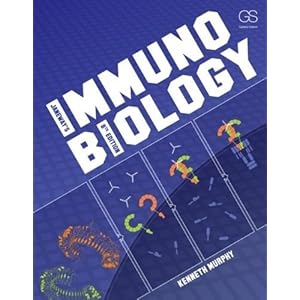
eighth edition has been thoroughly revised and updated, available in print and e-book formats.
Janeway’s Immunobiology continues to monetary and authoritative standards, clear writing style and organization, uniform art program, and scientific accuracy. Whole host of interactive and many species of potentially harmful microorganisms in the environment, it provides a consistent point. The concept of full-color art program is consistent with the description of the processes and mechanisms of the concepts in the text. 16 Chapter readable, textbook organization and presented in such a way to help provide complete one-semester immunology course, starting with the innate immune system, and then move to the adaptive immune and the end and Clinical Immunology application.
Provide end in the issues discussed in Chapters 2 and 16. These issues can be reviewed, or in the classroom or informal research team in the basis for discussion. Summary of each part, each chapter. In previous versions, the Caduceus edge icon Geha and Notarangelo topic Case Studies in Immunology, Sixth Edition.
In the eighth edition of the new
The innate immune updated and expanded, now in two separate chapters (2 and 3), as well as the rest of the textbook further emphasized. Chapter 2 describes the antimicrobial peptides and the complement system, cell innate natural receptors and cell-mediated immunity (such as Toll-like receptor phagocytic function of NK cells, interferon production, innate-like lymphocytes) and Chapter 3 discusses.
Lectin complement on the part has been to re-create, re-conceived ways, first, it is easier to teach a priori recognized it into the explanation.
The evolution of the entire text, to help students see similar strategies, the use of different creatures.
Chapter 7 signal through the words and numbers of immune system receptors have been revised to show a cohesive synthesis of signaling immunology, focusing on improved illustration of antigen recognition signals and activation of lymphocytes. By the signal processing of the other receptors, in the appropriate place in the entire book.
B-cell immune response (Chapter 10), in particular with regard to the outer periphery of human trafficking lymphoid organs (lymph nodes), the location of their updates section B cells encounter antigen.
The mucosal immunization coverage (Chapter 12) have been proposed to date, including the reaction symbiotic microorganisms and specialized dendritic cells and regulatory T cells in maintaining the food antigens tolerance and symbiotic bacteria.
Chapter 13, the failure of the host defense mechanism, has been reorganized and revised to the context of the structured development approach for primary immunodeficiency.
Chapter 16, the manipulation of the immune response, has been modified to include a greater emphasis on immunotherapy and vaccine clinical problems and a complete update.
Many new and revised figures show that the concept proposed in the paper, related processes and mechanisms.
The use of icons was updated and expanded, and a new focus on the signal transduction pathway.
Throughout the text and add a new reference.
Show more

